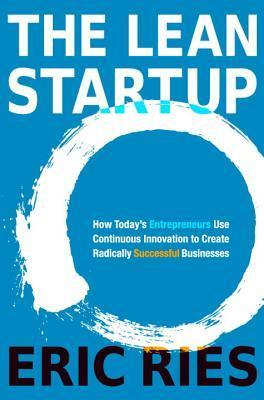More on this book
Community
Kindle Notes & Highlights
by
Eric Ries
Introduction
In magazines and newspapers, in blockbuster movies, and on countless blogs, we hear the mantra of the successful entrepreneurs: through determination, brilliance, great timing, and—above all—a great product, you too can achieve fame and fortune.
there is something deeply appealing about this modern-day rags-to-riches story. It makes success seem inevitable if you just have the right stuff.
If we build it, they will come.
When we fail, as so many of us do, we have a ready-made excuse: we didn’t have the right stuff. We weren’t visionary enough or weren’t in the right place at the right time.
Startup success is not a consequence of good genes or being in the right place at the right time. Startup success can be engineered by following the right process, which means it can be learned, which means it can be taught.
THE LEAN STARTUP METHOD
The five principles of the Lean Startup, which inform all three parts of this book, are as follows:
1. Entrepreneurs are everywhere
The concept of entrepreneurship includes anyone who works within my definition of a startup: a human institution designed to create new products and servic...
This highlight has been truncated due to consecutive passage length restrictions.
the Lean Startup approach can work in any size company, even a very large enterprise, ...
This highlight has been truncated due to consecutive passage length restrictions.
2. Entrepreneurship is ...
This highlight has been truncated due to consecutive passage length restrictions.
A startup is an institution, not just a product, and so it requires a new kind of management specifically geared to i...
This highlight has been truncated due to consecutive passage length restrictions.
3. Validated learning
They exist to learn how to build a sustainable business. This learning can be validated scientifically by running frequent experiments that allow entrepreneurs to test each element of their vision.
4. Build-Measu...
This highlight has been truncated due to consecutive passage length restrictions.
All successful startup processes should be geared to accelerate that feedback loop.
5. Innovation accounting
focus on the boring stuff: how to measure progress, how to set up milestones, and...
This highlight has been truncated due to consecutive passage length restrictions.
Why Startups Fail
The first problem is the allure of a good plan, a solid strategy, and thorough market research.
but this doesn’t work, because startups operate with too much uncertainty. Startups do not yet know who their customer is or what their product should be.
Planning and forecasting are only accurate when based on a long, stable operating history and a relatively static environment. Startups have neither.
The second problem is that after seeing traditional management fail to solve this problem, some entrepreneurs
believes that if management is the problem, chaos is the answer.
It may seem counterintuitive to think that something as disruptive, innovative, and chaotic as a startup
must be managed.
MANAGEMENT’S SECOND CENTURY
Part
START
ENTREPRENEURIAL MANAGEMENT
Entrepreneurs are rightly wary of implementing traditional management practices early on in a startup, afraid that they will invite bureaucracy or stifle creativity.
As a result, many entrepreneurs take a “just do it” attitude, avoiding all forms of management, process, and discipline. Unfortunately, this approach leads to chaos more often than it does to success.
THE ROOTS OF THE LEAN STARTUP
Among its tenets are drawing on the knowledge and creativity of individual workers, the shrinking of batch sizes, just-in-time production and inventory control, and an acceleration of cycle times.
Progress in manufacturing is measured by the production of high-quality physical goods.
the Lean Startup uses a different unit of progress, called validated learning.
It has to provide a method for measuring progress in the context of extreme uncertainty. It can give entrepreneurs clear guidance on how to make the many trade-off decisions they face:
it must allow entrepreneurs to make testable predictions.
The goal of a startup is to figure out the right thing to build—the thing customers want and will pay for—as quickly as possible. In other words, the Lean Startup is a new way of looking at the development of innovative new products that emphasizes fast iteration and customer insight, a huge vision, and great ambition, all at the same time.
Startups have a similar engine that I call the engine of growth
Every new version of a product, every new feature, and every new marketing program is an attempt to improve this engine of growth.
The Lean Startup method, in contrast, is designed to teach you how to drive a startup. Instead of making complex plans that are based on a lot of assumptions, you can make constant adjustments with a steering wheel called the Build-Measure-Learn feedback loop. Through this process of steering, we can learn when and if it’s time to make a sharp turn called a pivot or whether we should persevere along our current path.
Throughout the process of driving, you always have a clear idea of where you’re going.
Startups also have a true north, a destination in mind:
call that a startup’s vision. To achieve that vision, startups employ a strategy, which includes a business model, a product road map, a point of view about partners and competitors, and ideas about who the customer will be. The product is the end result of this strategy (see the chart on this page
Products change constantly through the process of optimization, what I call tuning the engine. Less frequently, the strategy may have to change (called a pivot). However, the overarching vision rarely changes.
2 DEFINE
What Mark was missing was a process for converting the raw materials of innovation into real-world breakthrough successes. Once a team is set up, what should it do? What process should it use? How should it be held accountable to performance milestones? These are questions the Lean Startup methodology is designed to answer.
IF I’M AN ENTREPRENEUR, WHAT’S A STARTUP?


